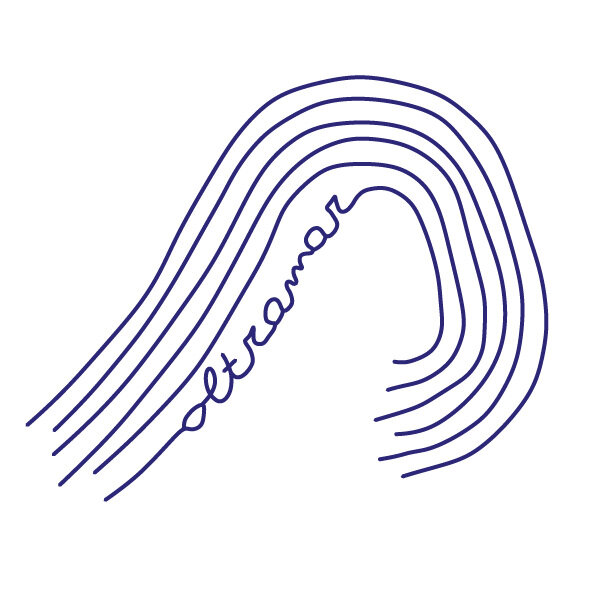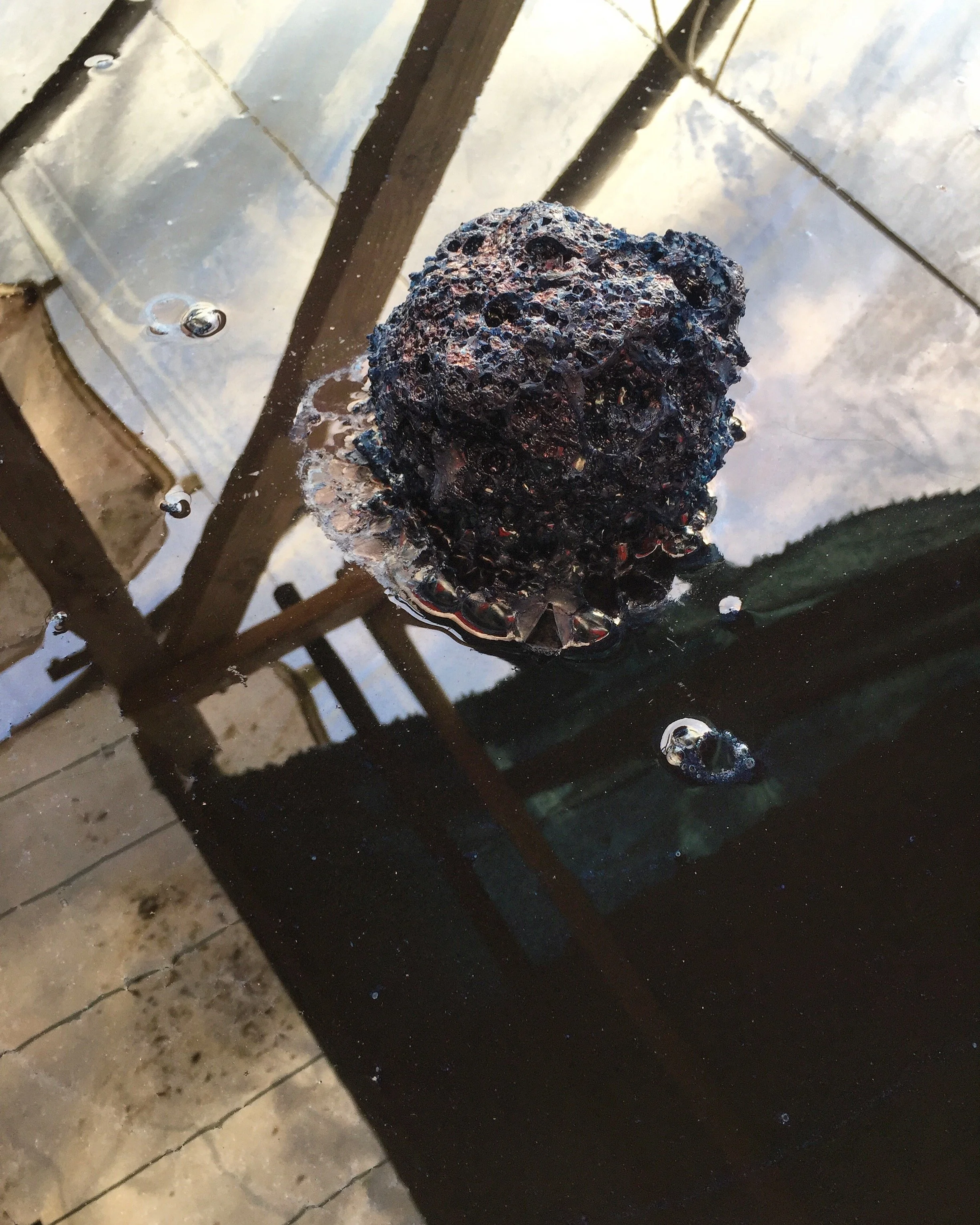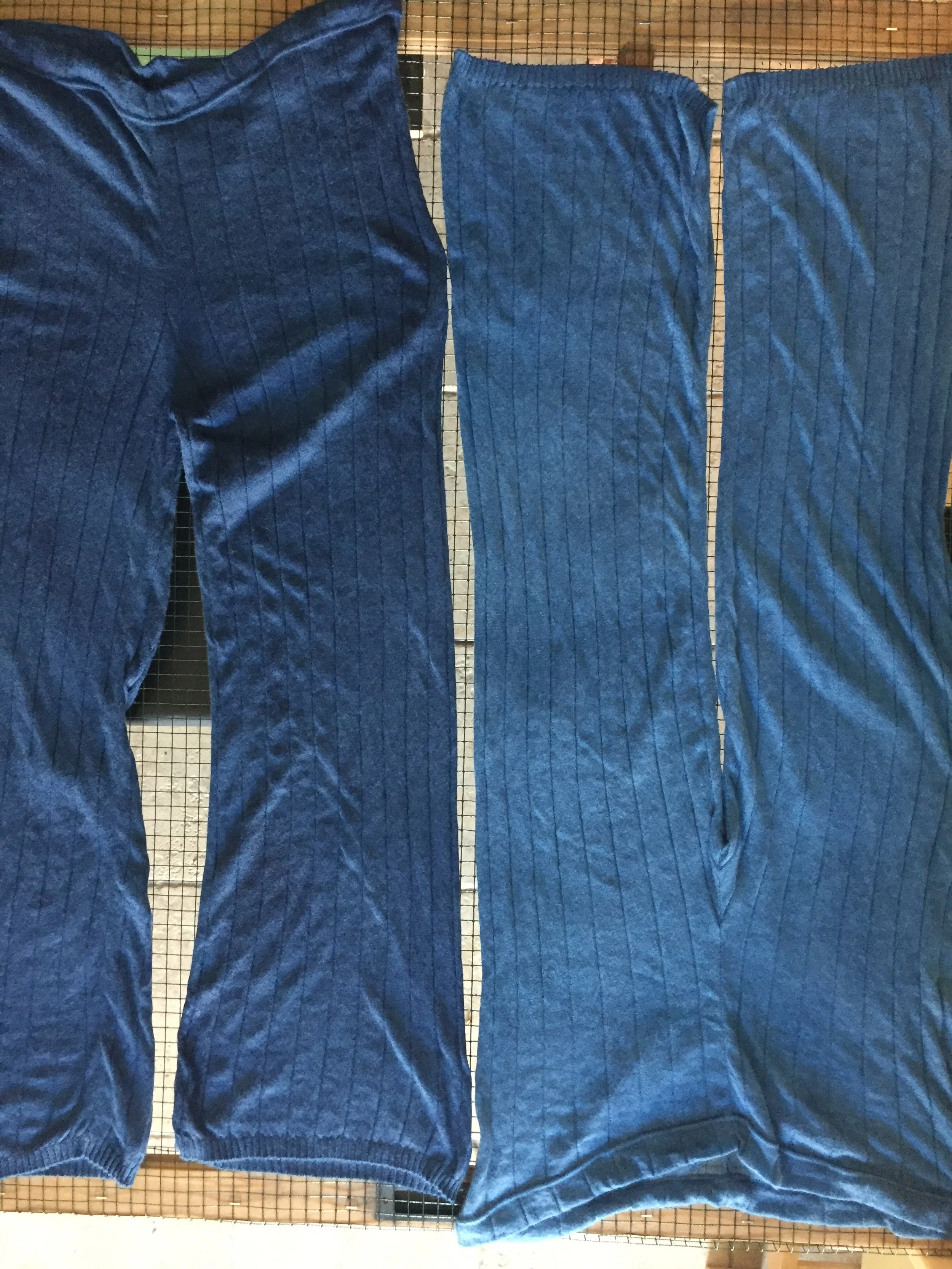INDIGO
Dyeing with organic indigo is for me a deep meditative experience. A catalysis for ideas, thoughts, emotions; the same experience I am living when I am next/into the sea.
There are a lot of recipes of natural indigo VAT, but the one I am working and enjoying the most is the FERMENTATION one. Indigo dyeing is for me a marvellous teamwork where the craftsman, his dye bath and the environment that surrounds them collaborate without prevailing over the other, but in balance and in continuous listening. An indigo VAT can live for more than a year and the wellbeing depends on the care and nutrients a dyer is giving. We regularly feed the bacteria and make sure that the PH is the good one to maintain alive the community. Organic Indigo dye is a living colour that needs it’s breaks and time to rest between the different dyeing activities. It speaks its own language and show the dyer when she/he needs rest. There are moment when you arrive at the studio on fire wanting to dye, but if the dye it’s not in the same mood you are , better wait another day. I love this specificity on indigo dye technique, that remembers us to respect other living things and their rhythm. And that living doesn’t mean moving, talking, interacting with other things and environment as we human beings do.
Technically the skill of the artisan dyer lies in knowing how to control, manage and dominate all the factors that affect the dye bath and being able to reproduce the same shades regularly over time. Personally, I love to work with the variability enhancing the concept of ephemeral and unrepeatable. The unicity of each moment is what I am looking for and I treat each piece of garment as a one-of-a-kind expression. As we are all unique so the garments and objects we are offering you.
ORGANIC INDIGO
Each latitude and continent of the world has its own “indigo” plant. The word “Indigo” refers to the pigment, that is both obtained in laboratory or extracted from plants. Organic indigo can be extracted from several plants appertaining to different botanical species. Not only different plants, all over the world we find as well different ways to use the plant and dyeing techniques. To mention few of them: in Japan they compost the leaves of Persicaria Tinctoria obtaining Sukumo, in southwest of France originally, they were doing small balls from the leaves of Isatis Tinctoria and let them ferment and dry obtaining Coccagne, in India they extract the pigment from Indigofera Tinctoria using water obtaining blue blocks called Indigo Cakes.
INDIGO DYE
The oldest example of indigo dyed textile was discovered in Peru and is date to between 4 000 - 6 200 years ago. This ancestral technique is still in use today to organically dye cellulosic and proteinic fibers. Each fabric has a different interaction with the dye bath, and it is revealing the blue in a specific and unique way. When we immerge our fiber into the dye VAT, we can see that the colour of the liquid is like a mint tea. When we take it out from the dye bath the fiber is yellowish, turning quickly to green and finally getting bluer and bluer as it’s oxidised in the contact with air. A magical moment.
FIBERS
Only cellulosic (cotton, linen, hemp, nettle, etc) and proteinic (silk, cashmere, wool, etc) can be naturally dyed because of the affinity between their chemical and physical properties. At OLTRAMAR we are delight to work with nettle, hemp, and linen fabrics. These materials can be used each day of the year (they keep you warm or fresh), they are resistant, they require no pesticides to be grown and they are simply offering a marvellous feeling in contact with the skin.
We use cotton as well from time to time, especially when we source our fabrics from Italian and French upcycling suppliers.
BLUE SHADES
With one single dye bath we can obtain different shades from “blue ciel” to “blu notte”. We are literally building the intensity of the colour; the more dips the intense the shade. We have a maximum of dips we are doing per day, to be sure that the colour can rest, and that the fabric accept the colour into the fiber to assure a resistant tone.
For me each piece dyed in Indigo is like a fragment of the sea, a fragment of eternity.






